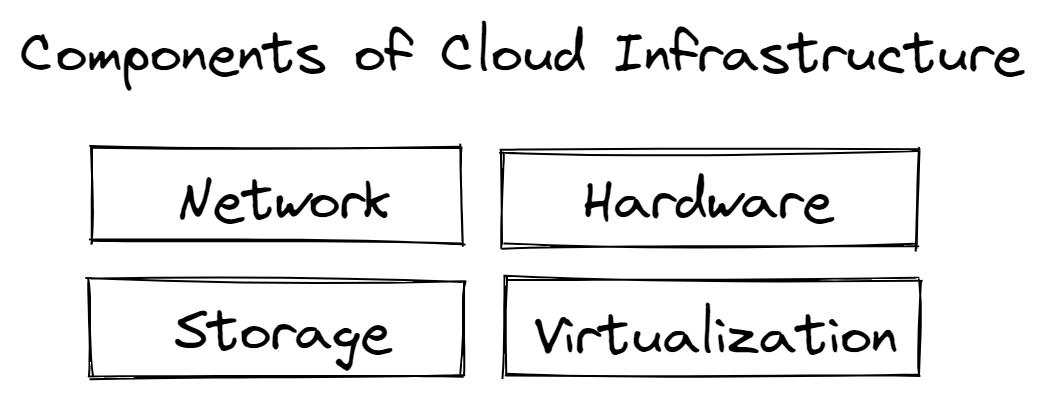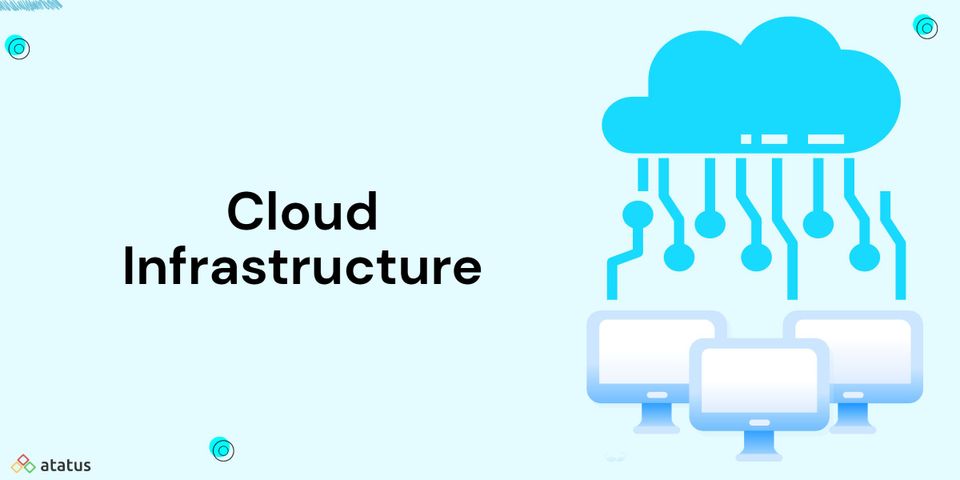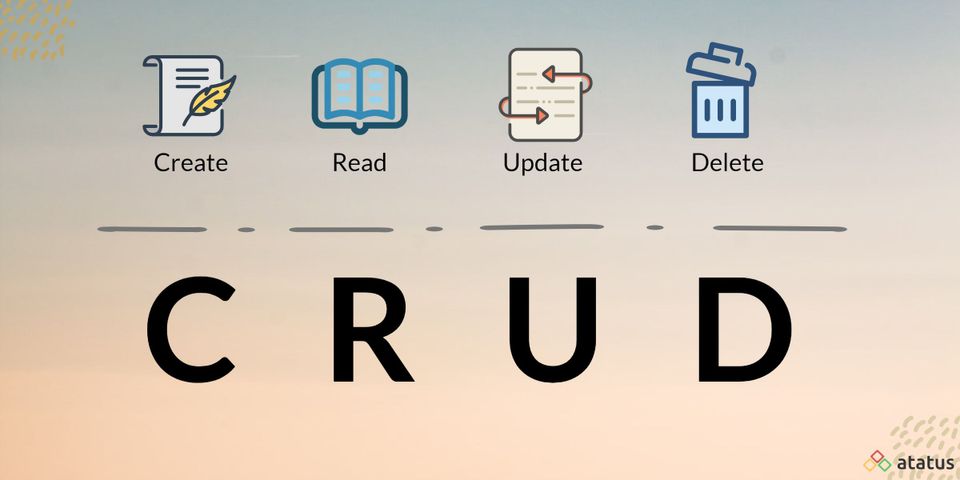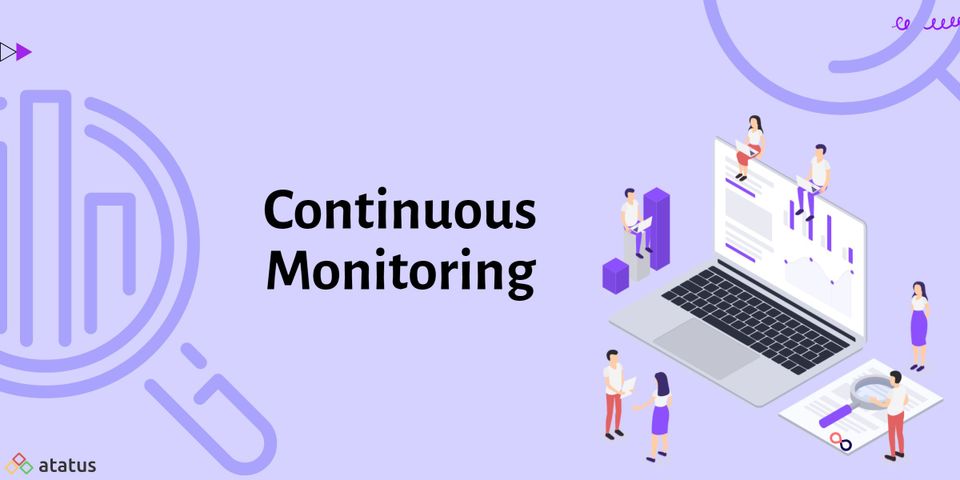Beyond data centres, cloud computing has become a critical component of a modern ecosystem and application integration strategy for enterprises of all sizes in practically every industry. Companies are turning to cloud providers for flexible cloud infrastructure to deliver modernised computing, networking, and storage capabilities rather than investing in costly hardware and managing and maintaining a data centre in-house.
We will cover the following:
- What is Cloud Infrastructure?
- Components of Cloud Infrastructure
- Benefits of Cloud Infrastructure
- Deployment Models of Cloud Infrastructure
- How to Manage a Cloud Infrastructure?
What is Cloud Infrastructure?
Cloud infrastructure is the combination of server hardware, networking equipment, storage resources, and software required to create cloud-based applications. Applications on cloud infrastructure can be accessed remotely via a variety of networks, including wide-area networks (WANs), telecommunication services, and the internet.
In essence, users have their own IT infrastructure that they may utilise without ever having to pay for the physical infrastructure to be built. The hardware resources are virtualized and abstracted to enable resource scaling, sharing, and provisioning among end-users in different regions of the world.
These virtualized resources are given to users across a network or the internet by a service provider or IT department in cloud computing. Virtual machines and components like servers, memory, network switches, firewalls, load balancers, and storage are among these resources.
Through the service, users can build their own IT infrastructure which includes a processor, storage, and networking fabric capabilities that can be configured in any way, just like a physical data centre enterprise infrastructure. In most cases, this gives you more flexibility in infrastructure design because it's easier to set up, replace, or remove than a physical one, which involves a manual input, especially when network connectivity needs to be changed or renovated.
Components of Cloud Infrastructure
A cloud service is made up of client-side systems like PCs, tablets, and other devices that communicate with backend data centre components over the internet. The following components make up cloud infrastructure:

Network
The network is the channel through which data can go between backend cloud systems and front-end client devices. The computing takes place in a cloud data centre that is located off-site. Users engage with these components through private or public networks that transmit data between two endpoints of a cloud service.
Visual information, logs, and control functions are all of the data that is transferred through a network. Data is moved between computing resources, storage systems, and the outside world through routers and switches. These could be white box switches running SDN software on commodity server hardware, or customised data centre switches.
According to the OSI data communications model, the network comprises physical electrical components such as routers, cables, and switches, as well as software applications and hardware firmware that enable data transfer.
Hardware
Virtual hosts, which represent a predefined collection of physical hardware components, are used to access cloud computing. While end-users don't have control over, maintain, or operate hardware at the physical layer, there are a number of hardware assets that are similar to any data centre, whether cloud or on-premise. Servers, processor units, GPUs, power supplies, memory, and other hardware components are among them.
Depending on the cloud service model, the allocation of these physical resources can be spread across users and IT workloads via virtualization and layers of abstraction. The hardware solutions have redundancy and flexibility built in to ensure that performance, security, and availability concerns with cloud infrastructure hardware do not affect end users.
Storage
A crucial component of the cloud infrastructure stack is the platform and storage system. Cloud data centres preserve backups, expand storage allocation across users, and store data across a variety of storage types and devices.
Virtualization or a software-defined architecture abstract the underlying hardware stack that supports the storage infrastructure. This allows users to use storage as a cloud service that can be added or removed as needed, rather than having to manually provision hardware at each server.
The following are the common cloud storage formats:
- Block storage - This method divides data into blocks, which are then stored in various storage systems across several server arrays. The data is separated from the hardware it is stored on. A single storage volume can be divided into many instances, known as blocks. Block storage is ideal for storing static data assets.
- Object Storage - Data files are split down into pieces and stored as uncompressed, unencrypted data objects, each with its own metadata identity. Unlike block storage, which only allows for a restricted range of metadata attributes as identifiers, metadata information can be changed. Object storage is ideal for data assets that change often.
- File storage - This is related to Network Access Storage (NAS), and it functions similarly to the local hardware device storage on your computer. Within a single data path, it is easily adjustable.
Virtualization
Virtualization or other software-defined computing architecture decouples the cloud service from its hardware resources, such as computing power and storage. Users have access to a virtual version of hardware resources such as platform, processor, storage, and networking through a software system that emulates hardware functionality.
Cloud vendors operate and manage the hardware resources that enable cloud services. Users only pay for the services they use, thus any difficulties with the hardware that underpins a cloud service must not have an influence on the Service Level Agreement (SLA).
These constraints are hidden from cloud service users with the help of virtualization, which allows IT workloads to be dynamically shifted and allocated across a pool of hardware resources in virtualized and reconfigurable IT systems.
Benefits of Cloud Infrastructure
The following are some of the most important business benefits of cloud infrastructure:
- Cost Efficiency
Businesses may utilise only as much space as they need with true visibility and expense control due to pay-per-use, consumption-based models. - Flexibility and Scalability
Cloud infrastructure provides businesses with a high amount of flexibility and infinite storage space, allowing them to scale up or down quickly to meet demand. - Operation Continuity
Data stored in the cloud is replicated across another server/location, ensuring that data is always available in the event of a failure. - Automated Agility
Cloud infrastructure services are built to be highly automated and self-provisioning, allowing end-users to scale up and down without the need for manual intervention. - Improved UX
Cloud infrastructure boosts service levels, lowers downtime, and enhances customer experience. - Automatic Software Updates
Many cloud service providers include routine maintenance, security upgrades, and 24-hour support. - Improved Mobility
Employees may access data and applications from any location, at any time, and on any device with the help of cloud infrastructure. - Improved Collaboration
Groups and communities in different locations can collaborate and access the same files with the help of cloud infrastructure, which greatly improves collaboration.
Deployment Models of Cloud Infrastructure
Individual users can have isolated access to cloud infrastructure, or it can be shared among several users—or a combination of both. The core infrastructure resources are the same regardless of the deployment model, but the allocation of those resources across users differs.
The three most popular cloud deployment models are as follows:
- Public Cloud - Outside of the vendor's firewall, a pool of virtualized resources shared by several users. The service is provided on an as-needed basis and is priced on a pay-as-you-go basis. The vendor is in charge of the public cloud's management and operation.
- Private Cloud - Individual users can access these cloud environments through their own firewall. Private cloud setups are often established as a virtualized on-premises data centres. Users can use the virtualized infrastructure as a private cloud service due to an added degree of automation.
- Hybrid Cloud - A hybrid cloud model is created by combining public and private clouds. Organizations can use the public cloud for cost-sensitive workloads and the private cloud for security-sensitive workloads because the workloads are transferable across the hybrid cloud.
How to Manage a Cloud Infrastructure?
Cloud infrastructure is likely to involve a high-priced server, networking, and storage hardware, and software and the key to making it all function together. Virtualization software separates hardware and software, allowing cloud service providers to establish new networks on the fly that connect virtual resources that may be provided as services to different customers. The same cloud infrastructure may be used by several separate services or clients at the same time. Virtualization software can be used to divide off these virtual networks in order to make them secure and discrete.
Many cloud providers create their own custom cloud infrastructure. Web hosting providers, software-as-a-service (SaaS) companies, social networking companies, and infrastructure-as-a-service (IaaS) companies are all included in this. Many cloud providers also build their own software code to allow their infrastructure to communicate with one another, generally based on open-source software. Google and Facebook are two well-known examples of companies that buy individual technological components and assemble the infrastructure in a custom installation for their own services.
Conclusion
Cloud infrastructure can be managed more efficiently than traditional physical infrastructure, which normally requires some components to be procured and assembled to support an application. Its scalability and flexibility make it suitable for enterprise computing. DevOps teams can deploy infrastructure programmatically as part of an application's code using cloud infrastructure.
Monitor Your Entire Application with Atatus
Atatus provides a set of performance measurement tools to monitor and improve the performance of your frontend, backends, logs and infrastructure applications in real-time. Our platform can capture millions of performance data points from your applications, allowing you to quickly resolve issues and ensure digital customer experiences.

Atatus can be beneficial to your business, which provides a comprehensive view of your application, including how it works, where performance bottlenecks exist, which users are most impacted, and which errors break your code for your frontend, backend, and infrastructure.





